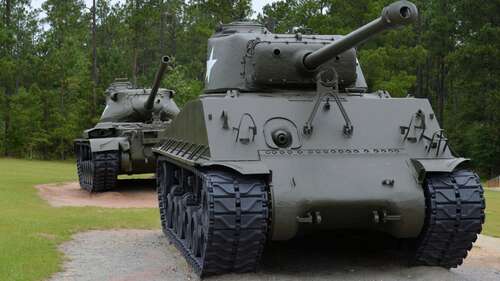
WWI is widely considered to be the first major conflict to introduce fully mechanized warfare. The rapid innovation of the late industrial age ushered in the age of the automobile, which found its way onto the battlefield. As much as trucks and other motorized equipment changed the nature of the Great War, nothing had such a dramatic impact as the MKIV tank.
Introduced by Great Britain, the MKIV was the first successful implementation of the tank. To be clear, it was not the first tank ever deployed, but it was the first successful tank to engage in battle. The MK I, which was created with the utmost secrecy, was originally called a landship but Winston Churchill, then the First Lord of the Admiralty, chose to call them water tanks during transport to obfuscate their intended purpose. They first appeared on the battlefield in 1916 as formidable and threatening weapons, but failed to have much effect.
It was with upgrades and modifications that the MKIV tank would finally help to turn the tide in 1917. Powered by a 105-horsepower engine and crewed by eight operators, a MKIV used a combination of 6-pounder cannons and machine guns to fight over rough terrain and cross trenches. Although it was abysmally slow, with deplorable operating conditions, the British manufactured 1,220 units and sent them to the front regardless. They became an important part of the formula for defeating the Central Powers, but more importantly, they introduced a new mechanized weapon that continues to be integral to land forces to this day.

